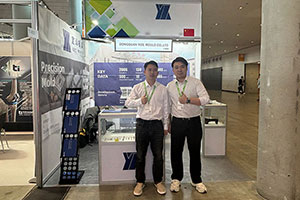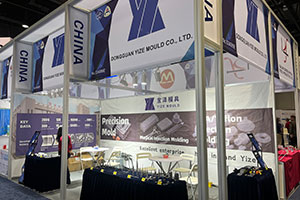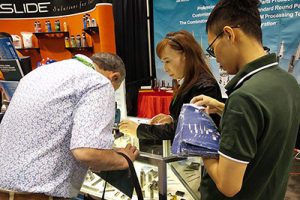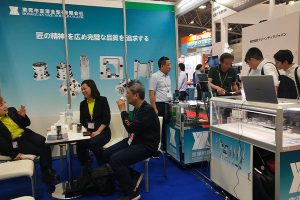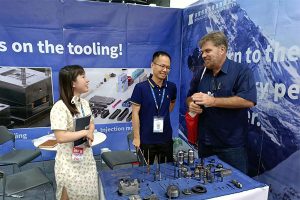The “Invisible Guardian” of Tungsten Carbide Die Lifespan
In the grand landscape of industrial production, tungsten carbide dies are like precise “behind-the-scenes craftsmen.” Their performance directly determines the quality of products and the efficiency of production. However, during […]
In the grand landscape of industrial production, tungsten carbide dies are like precise “behind-the-scenes craftsmen.” Their performance directly determines the quality of products and the efficiency of production. However, during continuous operation, tungsten carbide dies inevitably face challenges from friction and wear, which to some extent limit their service life. At this juncture, lubricants, as a “secret weapon” for reducing friction and slowing down wear, play a pivotal role in extending the lifespan of tungsten carbide dies. This article will conduct an in-depth analysis of the impact of lubricants on the lifespan of tungsten carbide dies from multiple dimensions, including lubricant selection, action mechanisms, and practical applications.
Precise Selection: The Right Fit for Lubricants
The selection of lubricants is by no means a random act. Instead, it requires a comprehensive consideration of various factors such as the working environment, material characteristics, and processing requirements of tungsten carbide dies. Common types of lubricants include oil-based lubricants, polymer lubricants, and solid lubricants.
La nostra attività in fabbrica: parti in metallo duro, parti di stampi, stampi a iniezione medicali, stampi a iniezione di precisione, stampaggio a iniezione di teflon PFA, raccordi per tubi PFA. e-mail: [email protected],whatsapp:+8613302615729.
Oil-based lubricants, such as greases and oils, can be regarded as the “intimate companions” of tungsten carbide dies under general working conditions. They can quickly form a uniform lubricating film on the die surface, effectively reducing friction and wear, and thus making significant contributions to extending the die’s lifespan. However, oil-based lubricants are like flowers in a greenhouse in high-temperature or high-pressure environments, being prone to volatilization, which in turn leads to a significant decline in lubrication effectiveness.
Polymer lubricants, such as PDMS and liquid crystal polymers, are the “capable warriors” for tungsten carbide dies operating in harsh environments with high temperatures and high pressures. They possess excellent high-temperature and high-pressure resistance. These lubricants can form a molecular film layer on the die surface, not only providing outstanding lubrication but also offering excellent corrosion protection, ensuring the stable operation of dies in extreme conditions.
Solid lubricants, such as MoS₂ and WS₂, excel in high-load, high-speed cutting and stamping processes. They can form a dense lubricating film layer on the die surface, significantly improving the surface hardness and wear resistance of the die, enabling it to remain resilient under heavy pressure.
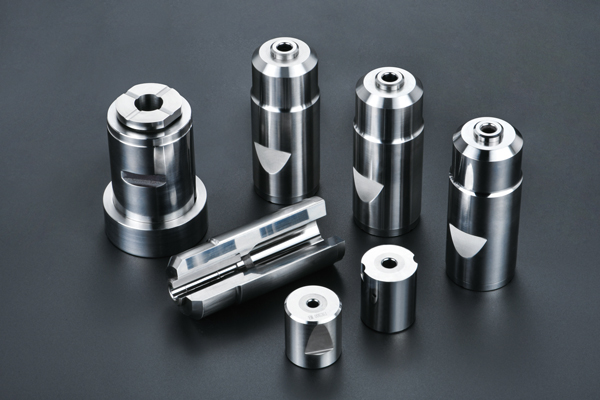
Mechanism Exploration: The Magic of Lubricants
The action mechanisms of lubricants in extending the lifespan of tungsten carbide dies are like a well-orchestrated “magic show,” mainly manifested in the following aspects.
Reducing the friction coefficient is a “signature move” of lubricants. They can form a lubricating film on the die surface, akin to putting on a smooth “coat” for the die, effectively lowering the friction coefficient between the die and the workpiece. This, in turn, reduces die wear and energy loss, ensuring smoother die operation.
Slowing down the wear rate is also an important capability of lubricants. They can reduce micro-cutting and plowing phenomena on the die surface, acting like a meticulous “repairer” to lower the wear rate of the die and extend its service life.
In terms of improving the die’s heat dissipation performance, lubricants also play a crucial role. They can reduce the contact thermal resistance between the die and the workpiece, allowing heat to dissipate more rapidly. This helps to minimize die deformation and cracking caused by thermal stress, ensuring that the die maintains good working conditions.
In addition, some lubricants have certain corrosion protection properties. They can form a protective film on the die surface, like wrapping the die in a “protective armor,” preventing the die from being eroded by oxidizing, acidic, and alkaline corrosive media, and safeguarding the die’s “health.”
Practical Application: The Value of Lubricants in Action
In actual production, the impact of lubricants on the lifespan of tungsten carbide dies is immediately apparent.
Improving die processing accuracy is one of the significant contributions of lubricants. By reducing friction and wear between the die and the workpiece, lubricants enable a more stable die processing process, thereby improving product quality and pass rates, and winning a good market reputation for enterprises.
Extending die service life is another prominent advantage of lubricants. They can slow down the wear rate of the die, reduce die failure rates and maintenance costs, allowing the die to create value for the enterprise over a longer period.
In terms of reducing production costs, lubricants also play a key role. By improving die processing accuracy and service life, they can lower product rejection rates and production cycles, saving a substantial amount of costs for enterprises and enhancing their market competitiveness.
However, there are also some issues to note regarding the use of lubricants in practical applications. Firstly, the selection of lubricants must be based on the specific working conditions and requirements of tungsten carbide dies to avoid “shooting in the dark,” which could lead to poor lubrication effects or die damage. Secondly, the application of lubricants should be uniform and appropriate to avoid “overdoing it,” as excessive or insufficient amounts can affect lubrication effects or cause waste. Additionally, lubricants should be kept clean and dry during use to prevent contact with contaminants such as water, oxides, and acidic-alkaline solutions, which could trigger chemical reactions and reduce lubrication performance.
Comprehensive Consideration: Extending Lifespan Under Multiple Factors
The comprehensive impact of lubricants on the lifespan of tungsten carbide dies is multi-faceted. They can reduce friction and wear between the die and the workpiece, decrease die wear and energy loss, and improve the die’s durability and stability. They can also slow down the die’s wear rate, reduce die failure rates and maintenance costs, and extend the die’s service life. Moreover, they can enhance die processing accuracy and stability, lower product rejection rates and production cycles, and reduce production costs.
However, lubricants are not the sole determinant of the lifespan of tungsten carbide dies. In actual production, various factors such as die material, manufacturing process, working environment, and usage conditions can all influence the die’s lifespan. Therefore, to maximize the extension of the lifespan of tungsten carbide dies, it is necessary to comprehensively consider multiple factors and adopt a variety of measures for comprehensive optimization and improvement.
Conclusione
In conclusion, lubricants are undoubtedly the “invisible guardians” of the lifespan of tungsten carbide dies. Reasonable selection and use of lubricants can significantly reduce friction and wear between the die and the workpiece, improve die processing accuracy and stability, and extend the die’s service life. In practical applications, we should pay attention to issues such as lubricant selection, application, and maintenance to ensure their optimal performance. At the same time, we should also recognize that extending the lifespan of tungsten carbide dies is a systematic project that requires a comprehensive consideration of multiple factors and the adoption of multiple measures for comprehensive optimization and improvement. Let us make good use of lubricants, this “secret weapon,” to “safeguard” the longevity of tungsten carbide dies and propel industrial production to new heights.


